How to Dive Maui Without Breaking the Bank
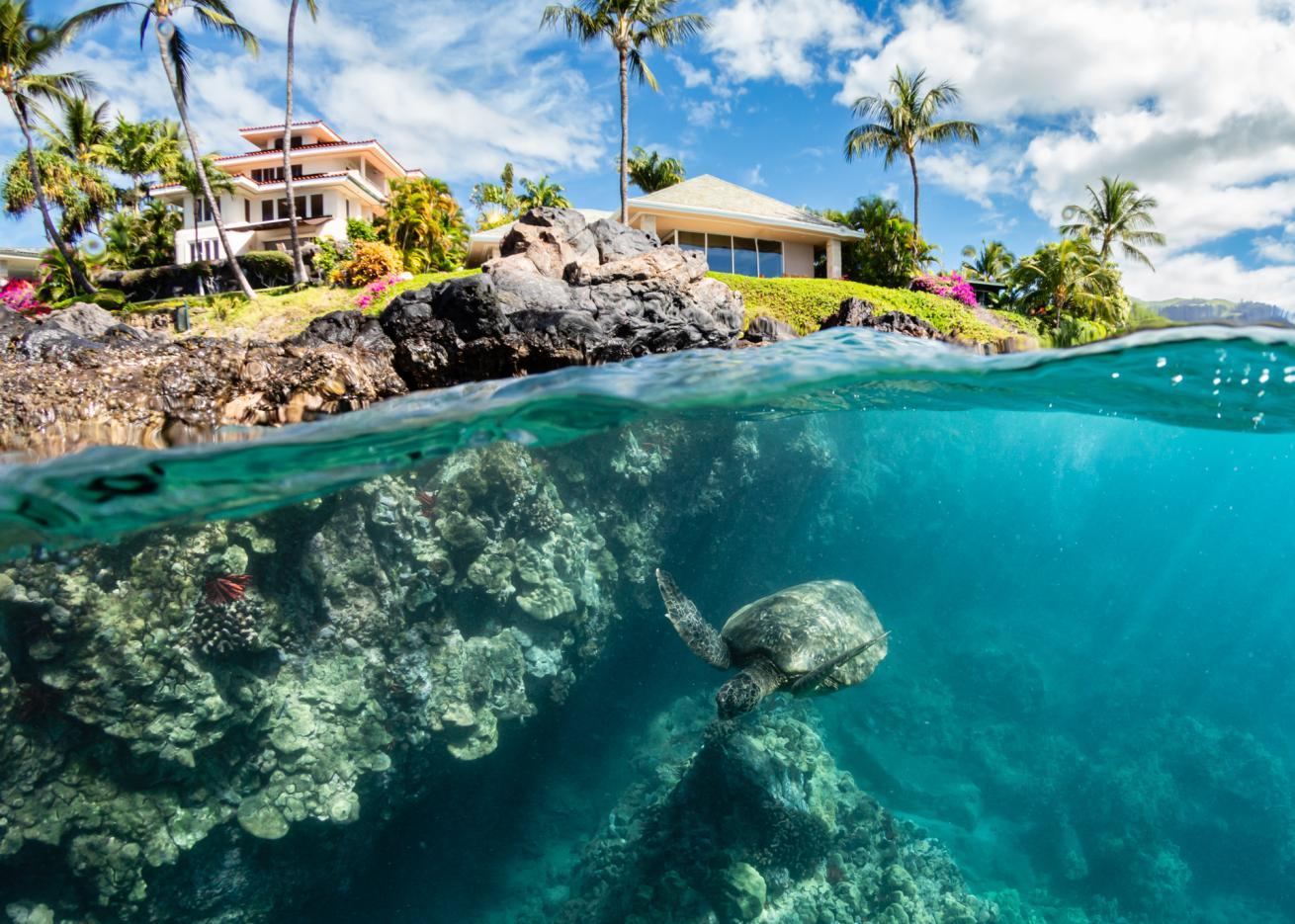
Renee CapozzolaDivers are almost guaranteed an encounter with sea turtles when shore diving in Maui
Many vacation divers believe that 6:30 a.m. check-ins, full boats and floating surface intervals are synonymous with the diving experience. While boat diving can be the most accessible option in many locales, specific destinations provide the luxury of choice. Maui is one such place. While several dive boats operate out of the island, the abundance of stunning shore sites elevates Hawaii as the #1 destination for Shore Diving in the 2024 Scuba Diving magazine Readers Choice awards within its region.
Maui locals are the first to sing the praises of these shore-accessible treasures. “I love a good boat dive, but luckily, it's not necessary here on Maui,” says Rae Duran, a Maui resident who prefers to dive on the south shore. “Our shore diving allows me to go at my own pace whenever I like.” That means you can hop in for a quick one-tanker or spend the day at the beach while taking multiple dips when you feel like it.
Rise On Your Own Time
If waking up at the crack of dawn on vacation isn’t your thing, shore diving also provides a relaxed itinerary. “We usually start our dives in the morning around 8 or 9 a.m.,” says Maui Diving Scuba Center owner Jessica Pickering, who has built a successful dive business around Maui’s shore diving offerings. “You get to actually sleep in, enjoy your hotel’s breakfast and come diving whenever is convenient for you,” she says. Even better, for those who struggle with seasickness, shore diving provides a way to access the water without having to power through the drowsiness that often comes from seasickness medication.
Andrew Raak, a professional underwater photographer and PADI Master Instructor, loves boat diving as much as anyone but lauds shore diving on Maui for the accessibility and freedom it affords. “The leisurely convenience of grabbing your gear, renting a tank and calling your favorite dive buddy to meet you at a local dive site is hard to top,” he says. It is also a more budget-friendly option for travelers who want to keep their costs low. “For a few dollars and a short car ride, we can splash into some of the world-class dive sites covered in corals and surrounded by marine life,” Raak adds.
Related Reading: Maui, the Aftermath: Stories of Loss, Grief and Community
Five Caves/Makena Landing
One of these sites is Five Caves, also called Makena Landing, on the south shore. The site is located within a well-maintained park with bathroom and shower facilities as well as an easy sandy entry for a comfortable and convenient experience. Underwater, divers can explore multiple swim-throughs and watch plenty of turtles. “There are big caverns to check out with aquatic life meandering around,” says Duran, and the shallow depth range of 10 to 40 feet allows for longer dive times as well.
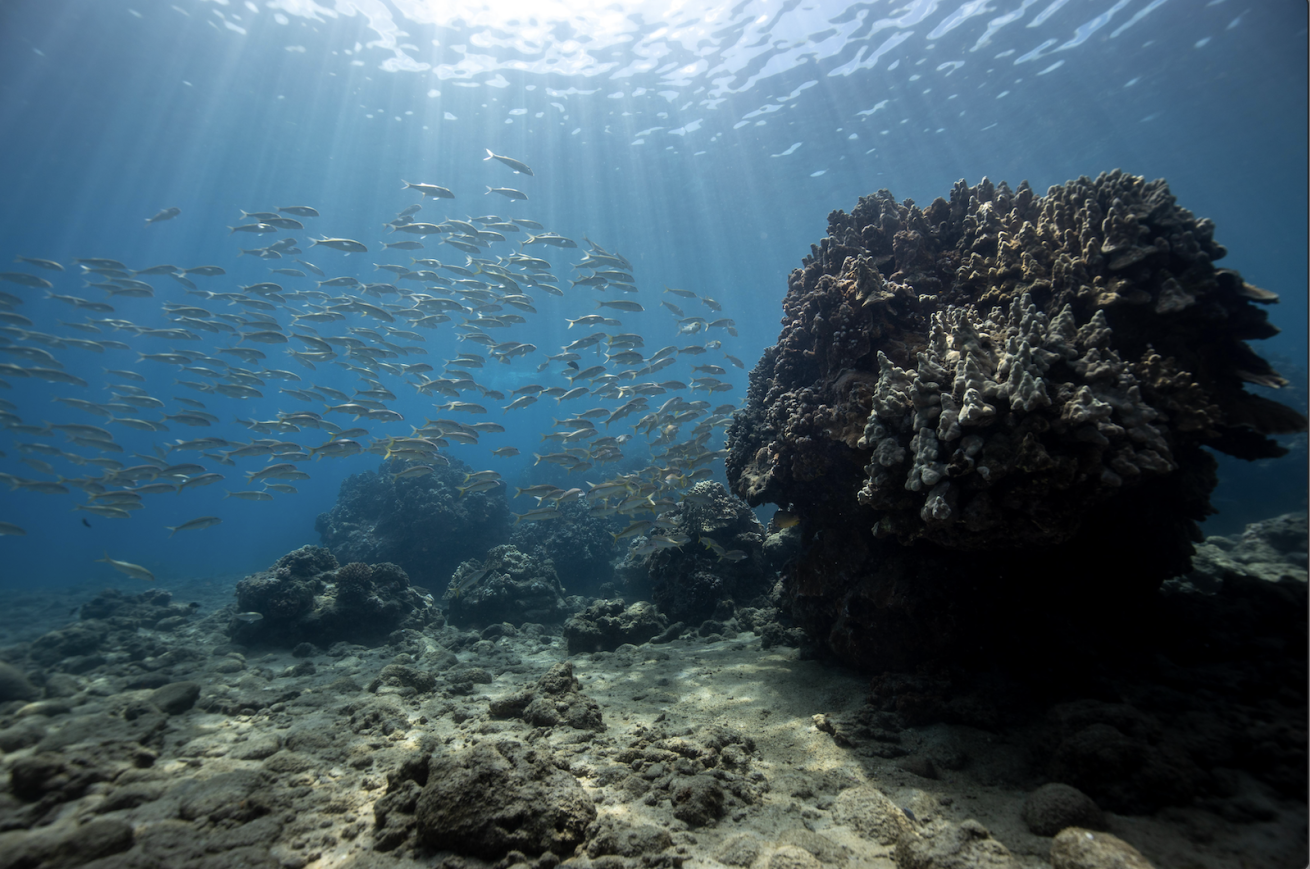
Kristin PaterakisHonolua Bay is a shallow but mesmerizing site to see schools of fish, healthy coral and a sea turtle cleaning station
Honolua Bay
Another shallow local favorite is Honolua Bay, located about 200 meters from the highway along a shaded path through the trees. The site has a trickier entry along a cobbled shoreline but is still beginner-friendly. It features a turtle cleaning station, colorful coral reef walls and schools of fish inside a protected bay. Don’t try to dive here in the winter months, though. The swells at that time of year make for some of Hawaii’s famous surfable waves.
Mile Marker 14
Mile Marker 14, a dive site and access point to Olowalu Reef, is one place where a dive guide can improve the experience. “Due to the size of this site, an unguided diver can easily lose track of their natural navigation features as the reef slowly starts to all look alike,” says Duran. The expansive reef sustains the Hawaiian islands’ oldest corals and the largest manta ray population in the U.S., which earned it a designation as a Mission Blue Hope Spot in 2017. “It’s wonderful for beginners,” says Pickering, “You can learn scuba diving and see turtles at the same time.”
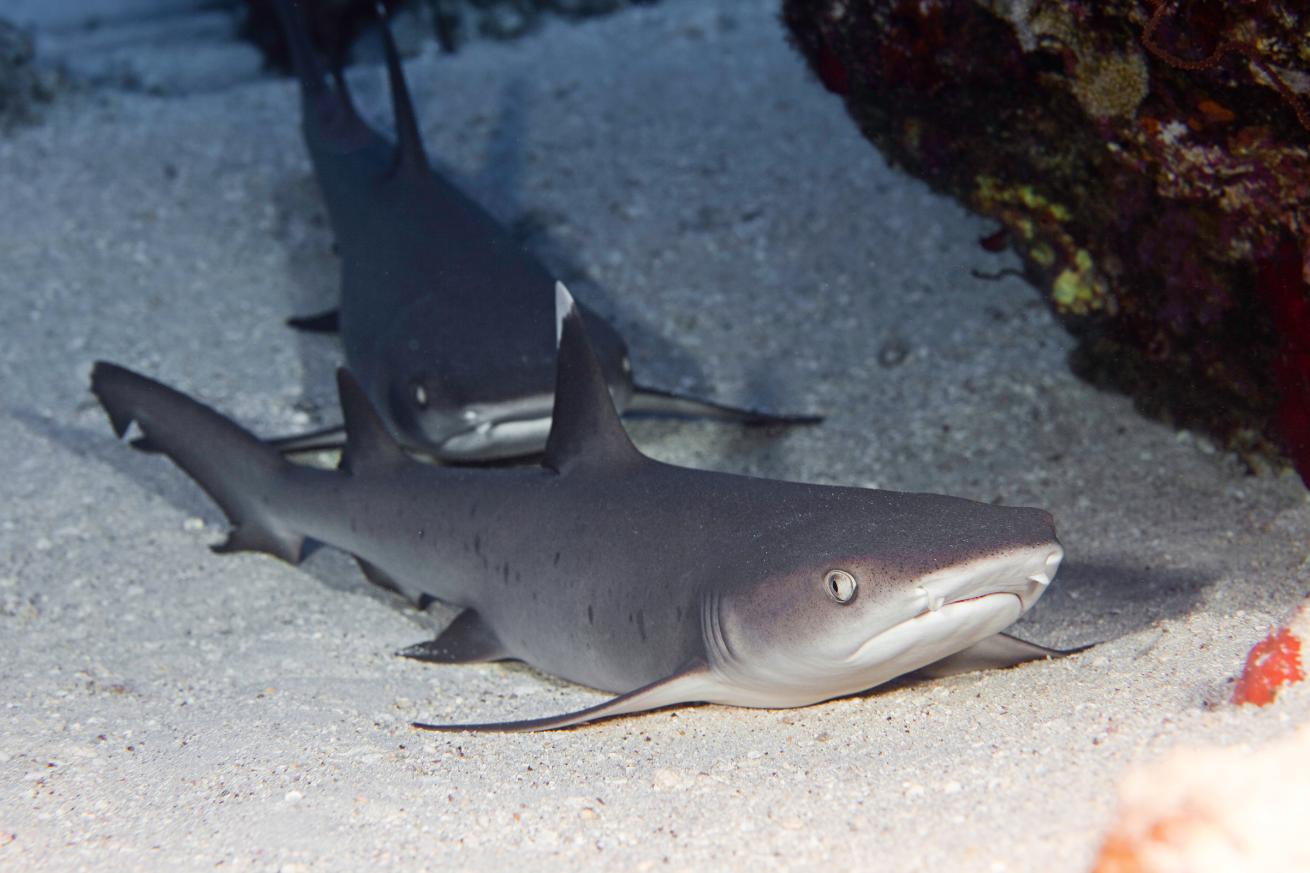
David FleetmanWhitetip reef sharks rest beneath a ledge at Black Rock
Black Rock
For a spectacular night diving experience with stronger currents, intermediate divers should visit Black Rock, or Pu’u Keka’a in Hawaiian. “Black Rock is awesome,” says Pickering. “It’s my favorite night dive on Maui. There are 6-to-8 foot conger eels that come out and hunt using your dive light. And on nights when the moon is not full, you can turn your light off and wiggle your hands and you can see like blue sparks coming off your fingertips from the bioluminescence.” Located on the west side of the island, Black Rock is at the far end of Ka'anapali Beach, near the Sheraton and Ka'anapali Beach Hotels. The lava cliffs make for a spectacular reef backdrop with tons of life in an easily accessible location. “You'll see squid on the regular, tons of slipper lobsters and other kinds of spiny lobsters, and sometimes you catch the little sharks out hunting,” says Pickering, “It’s a really interesting dive.”
Related Reading: Seeking Action-Packed Diving in Hawaii
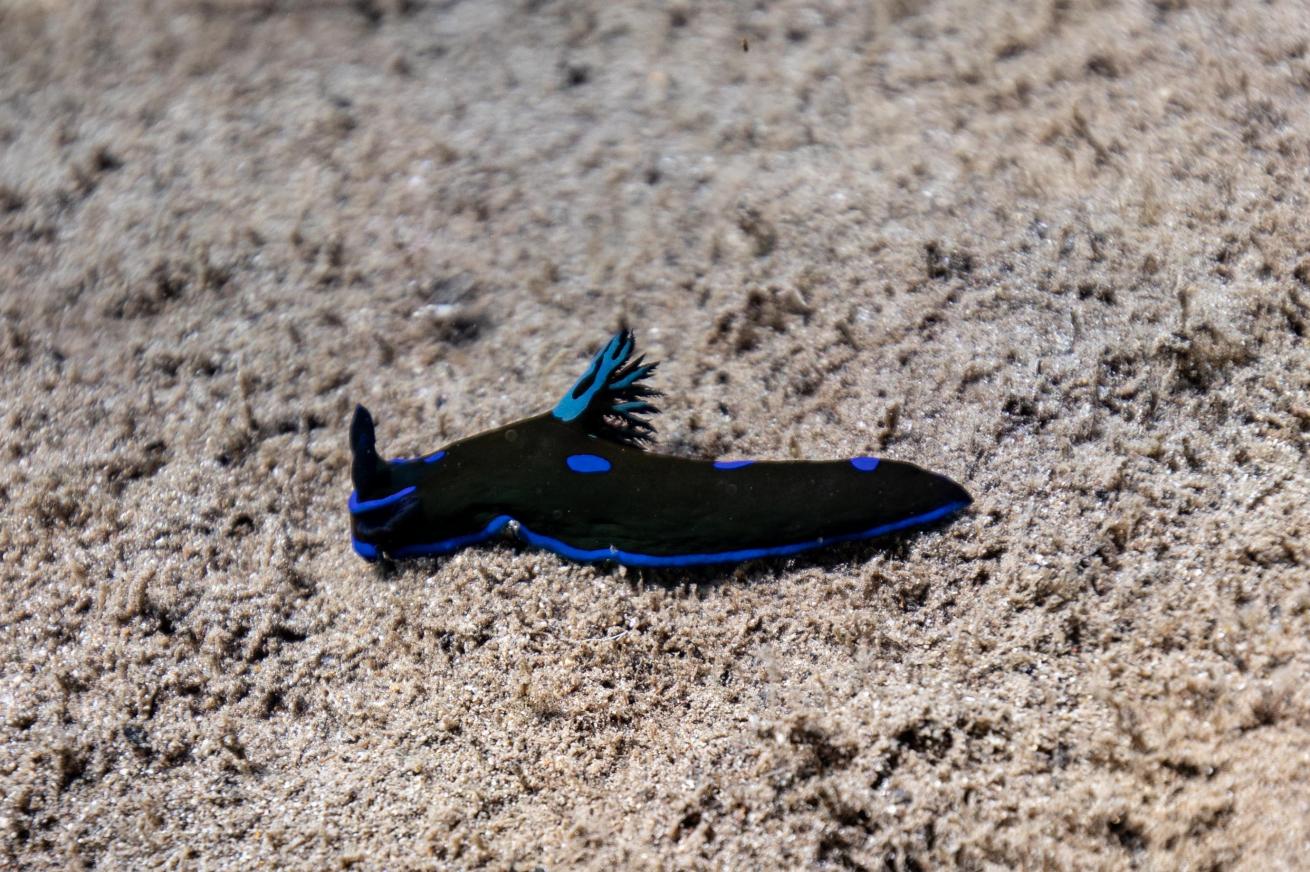
Kristin PaterakisLook close! Make sure to check rocky substrate as you swim out to the reef, you may find some colorful surprises like this gloomy nudibranch
Don’t Skimp on Hiring a Guide
While shore diving is undoubtedly more accessible to travelers, we recommend hiring a guide to get the most out of your time underwater. “Local operators will do all the heavy lifting, prep work, and, of course, clean up after the dive is complete, allowing you to enjoy that post-dive bliss,” Raak says.
Internet searching can only go so far, he cautions. “Many divers who choose to dig through internet forums to try and save a few dollars by planning a dive entirely on their own can quickly become frustrated when issues arise. Using the knowledge of a local guide will ensure you will be diving the best possible site for that day, as conditions can vary around the island, and provide an umbrella of safety should an emergency occur.” Not to mention, having someone to manage the dive flag (required by law in Hawaii) while you take in the scenery is pretty nice.
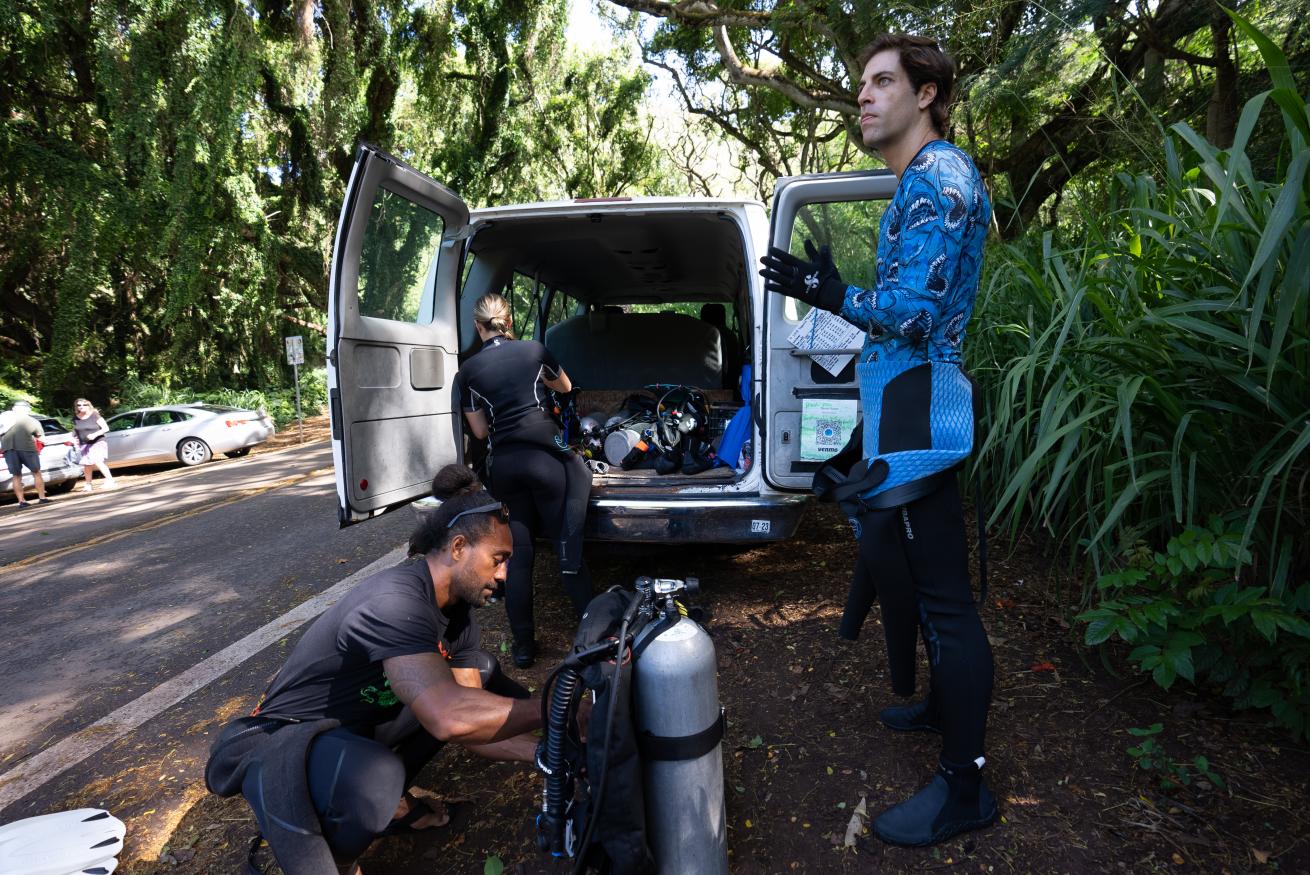
Kristin PaterakisHiring a guide is recommended when shore diving in Maui
When diving through a shop, logistics become a non-issue. Maui Diving provides transportation to and from dive sites around the island and a place to store valuables during the day. Post-dive, visitors can clean and dry gear at Ka'anapali or the dive shop in Kihei to avoid flying home with water-logged suitcases.










